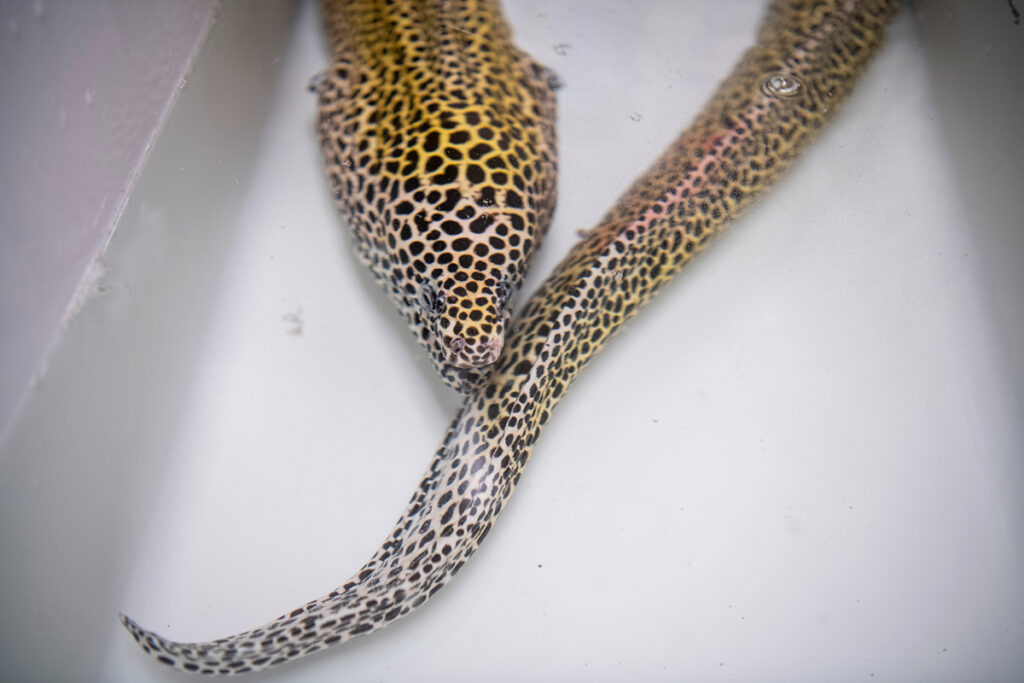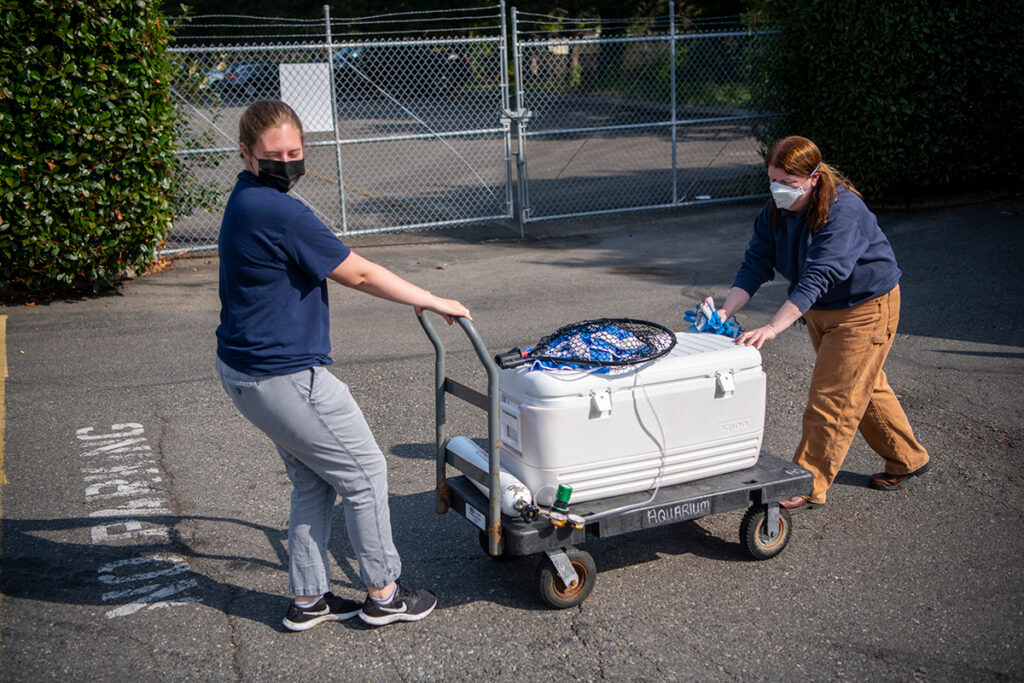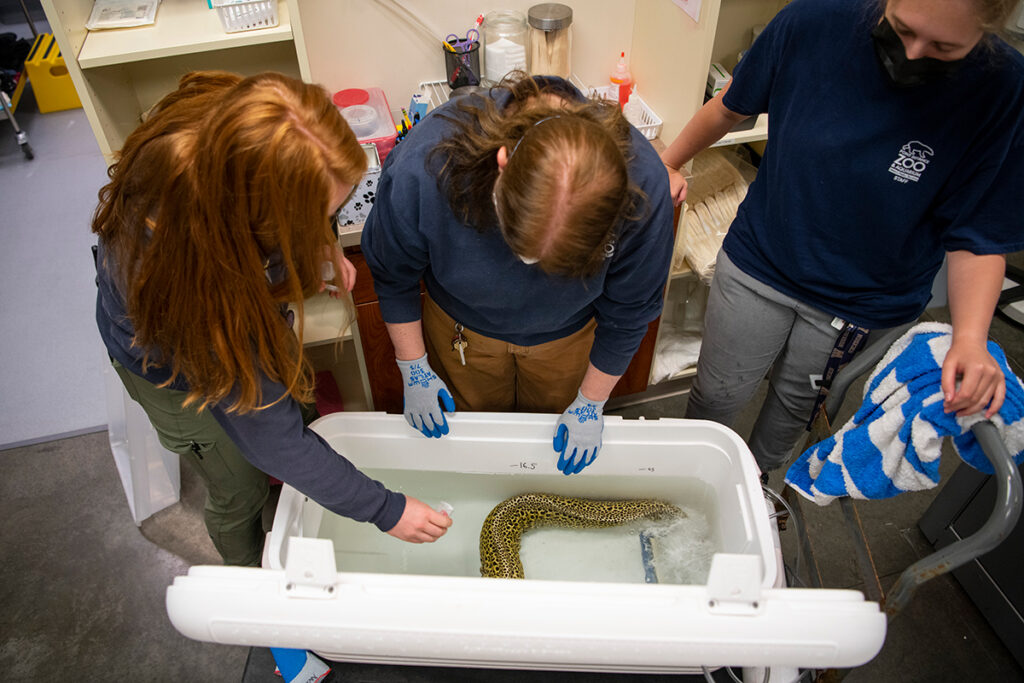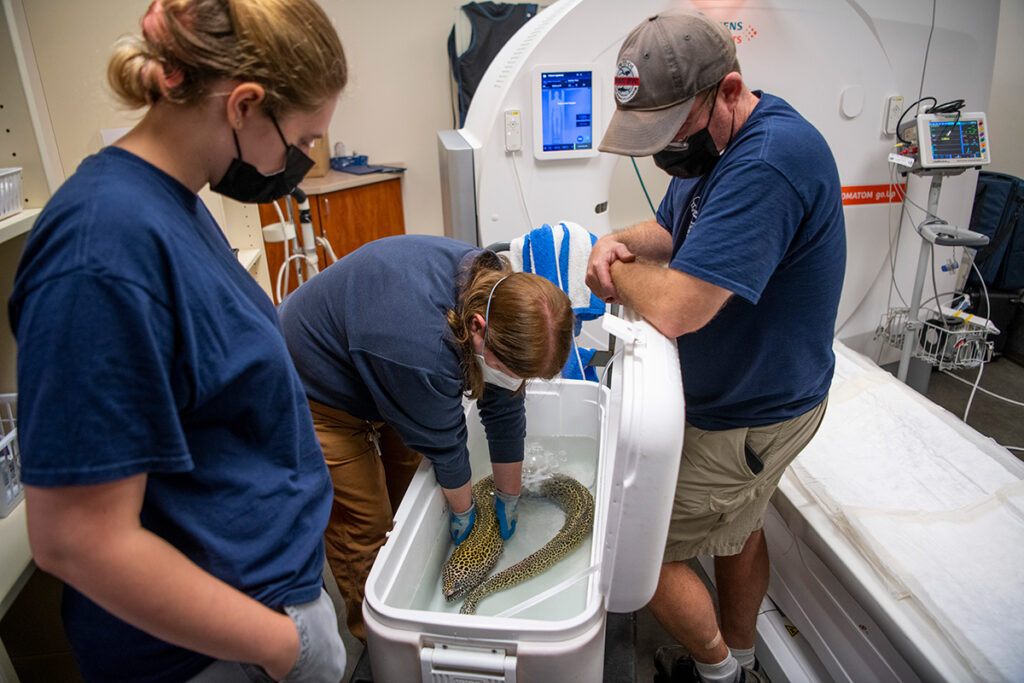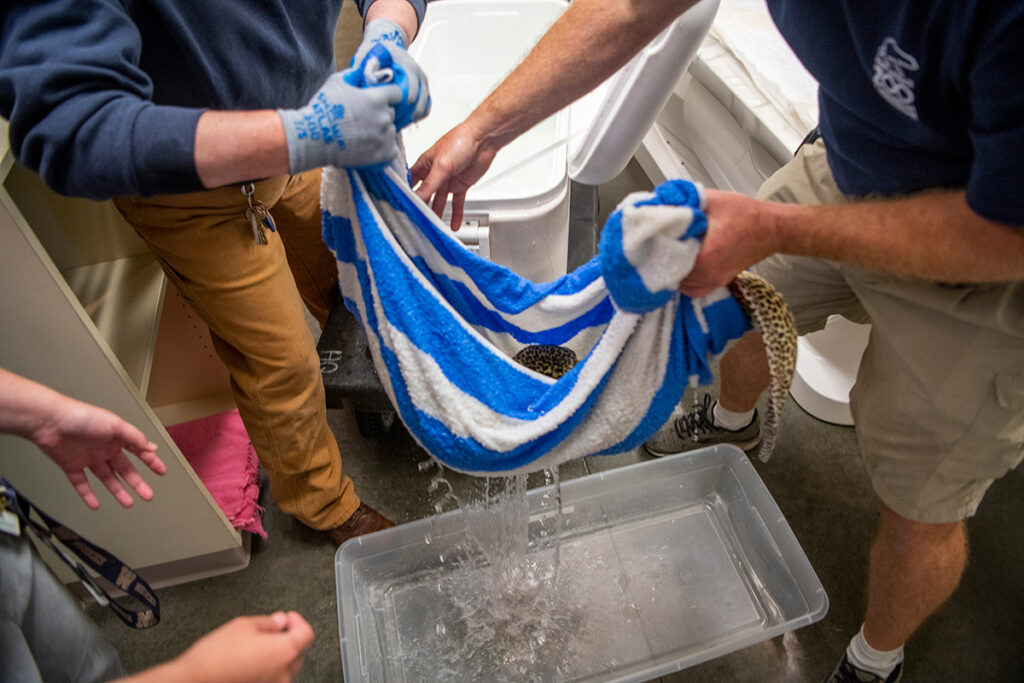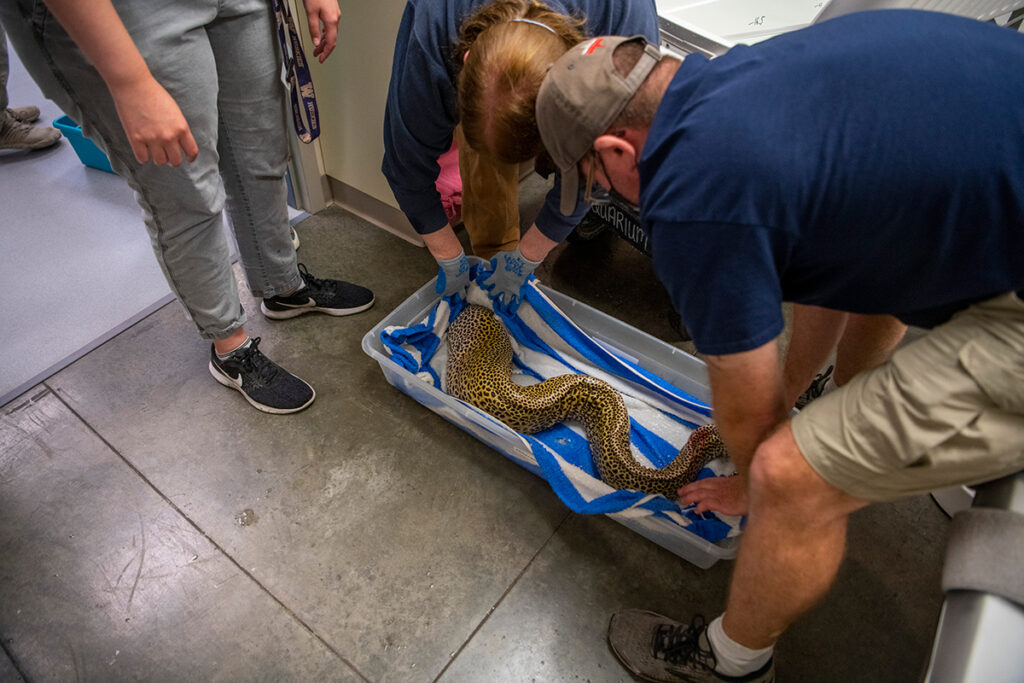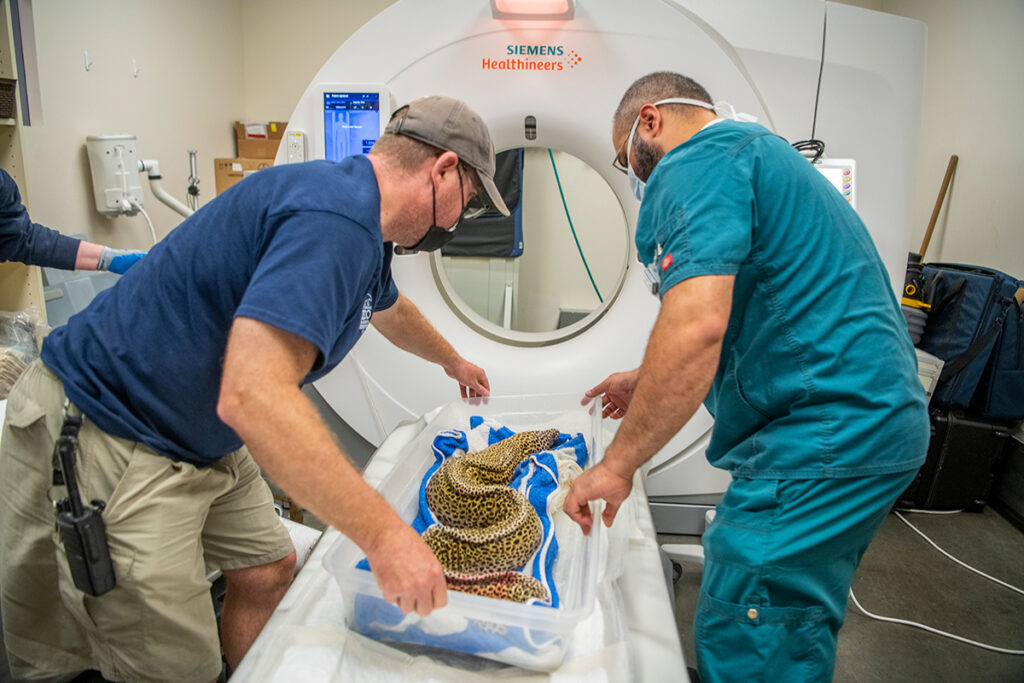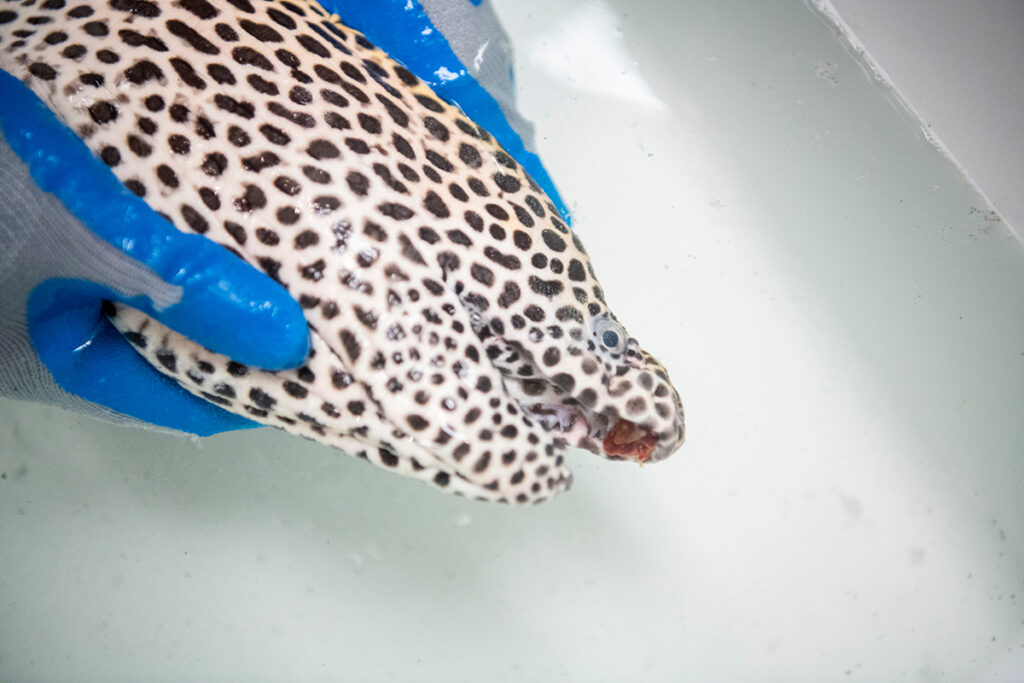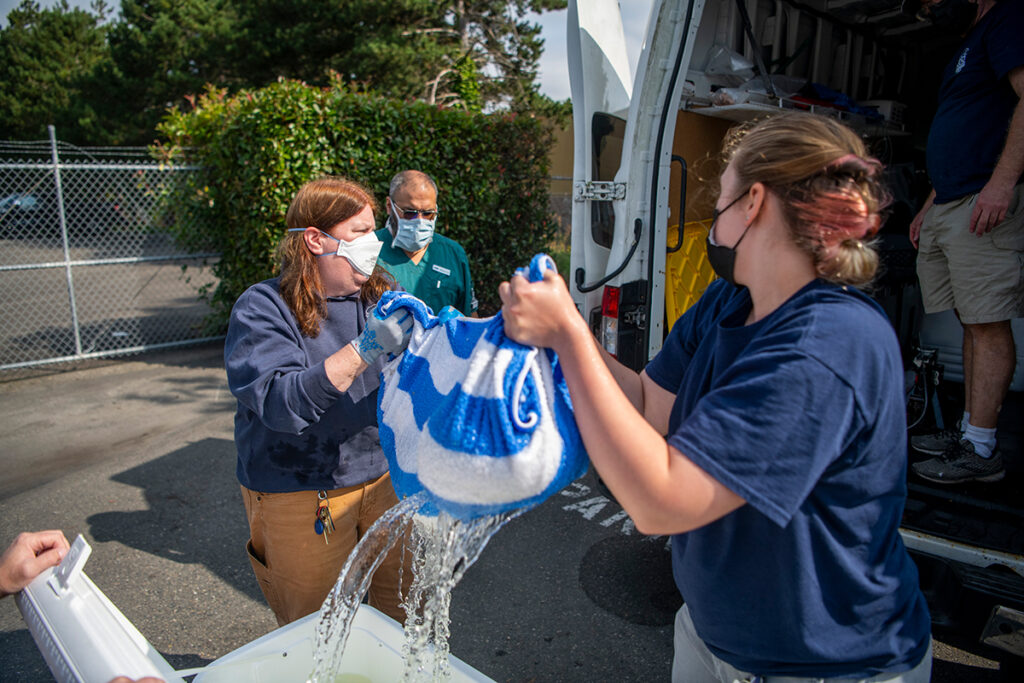Larry Gordon, a 30-year-old leopard eel, recently traveled from his home at Point Defiance Zoo & Aquarium to Summit Veterinary Hospital to receive a CT scan.
In April, Zoo Associate Veterinarian Dr. Kadie Anderson identified a small mass in the eel’s mouth and took skull/dental X-rays to assess what was happening.
“We determined that the oral mass was likely due to a broken tooth, which we extracted,” Dr. Anderson said.
Leopard eels have poor eyesight, so they have two rows of teeth to help them hunt for fish, crab, and octopus.
Larry Gordon healed well from this procedure and resumed eating. Unfortunately, the mass in his mouth returned and was larger.
“Because the growth returned, we decided to do a CT scan to evaluate Larry Gordon’s delicate skull and dental features to ensure that removing the mass was possible and safe,” Dr. Anderson said.
In September, the PDZA animal care team transported Larry Gordon to the veterinary hospital where they transferred him to a large cooler. 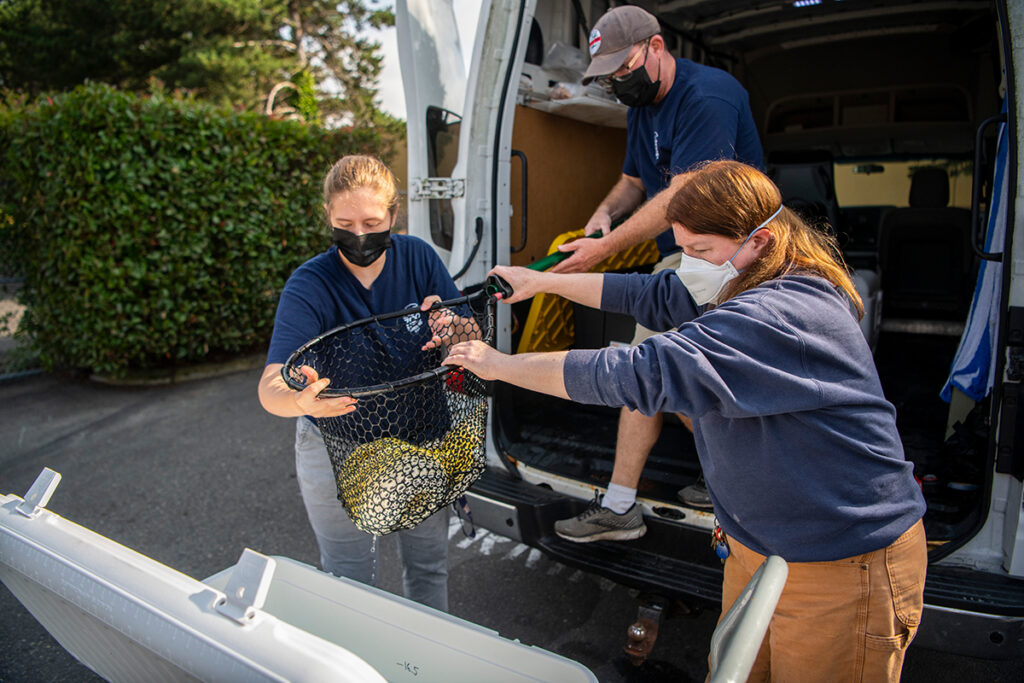
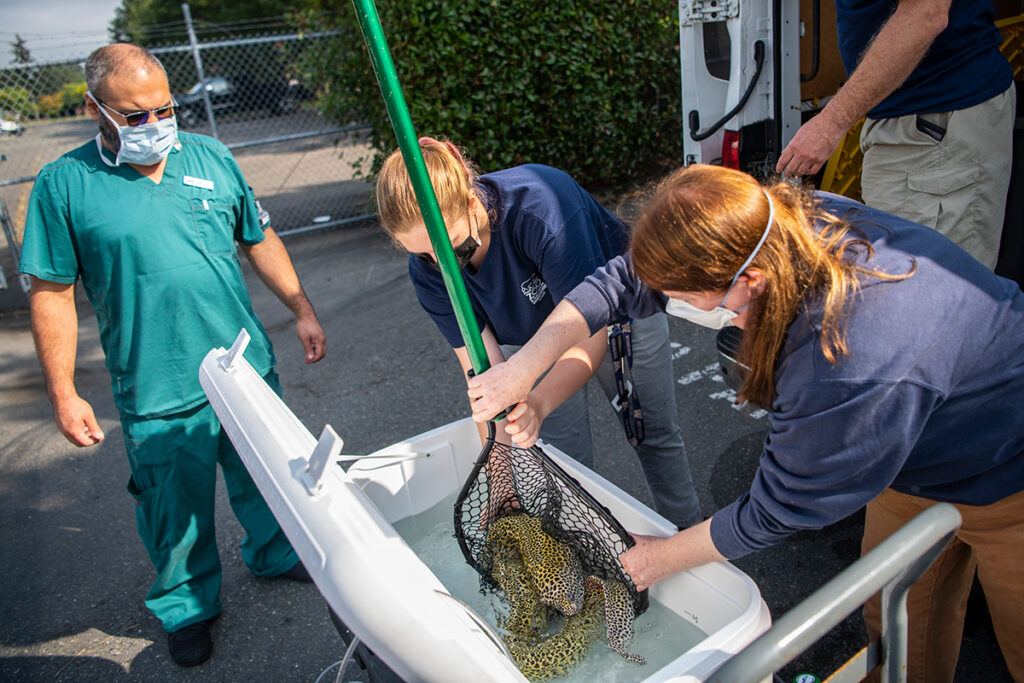
After being wheeled into the veterinary hospital, Larry Gordon was anesthetized by adding an anesthetic to the water. Aquarist Cindy then gently lifted him into a smaller tub that could fit in the CT scanner.
Dr. Anderson spritzed Larry Gordon again to keep his skin and gills moist before he entered the CT scanner.
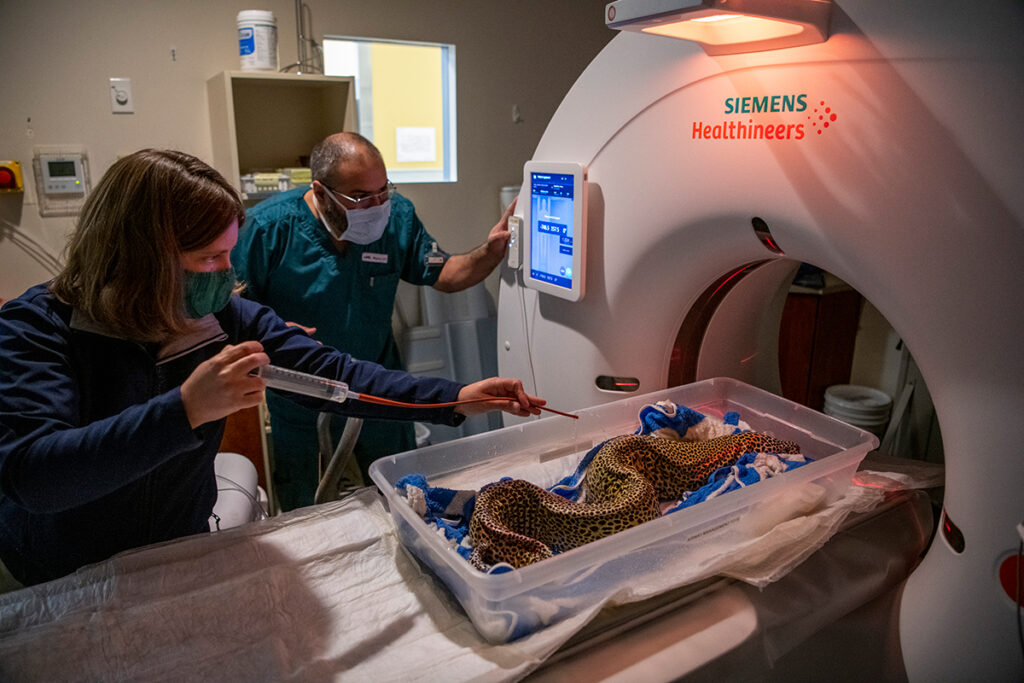 The Summit Veterinary Hospital team performed a CT scan on the leopard eel.
The Summit Veterinary Hospital team performed a CT scan on the leopard eel.
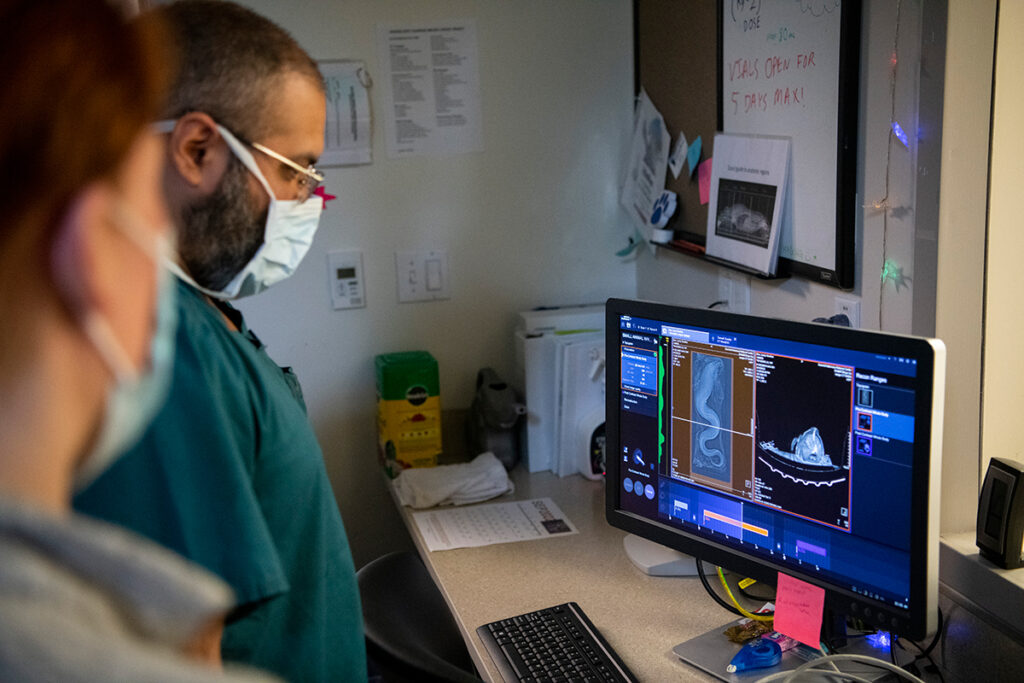 His animal care team carefully returned him to his cooler. With the help of PDZA Intern Veterinarian Dr. Cassidy, they used a syringe to feed him his lunch. The team then added fresh water (without anesthetic added) to his cooler to wake him up.
His animal care team carefully returned him to his cooler. With the help of PDZA Intern Veterinarian Dr. Cassidy, they used a syringe to feed him his lunch. The team then added fresh water (without anesthetic added) to his cooler to wake him up. 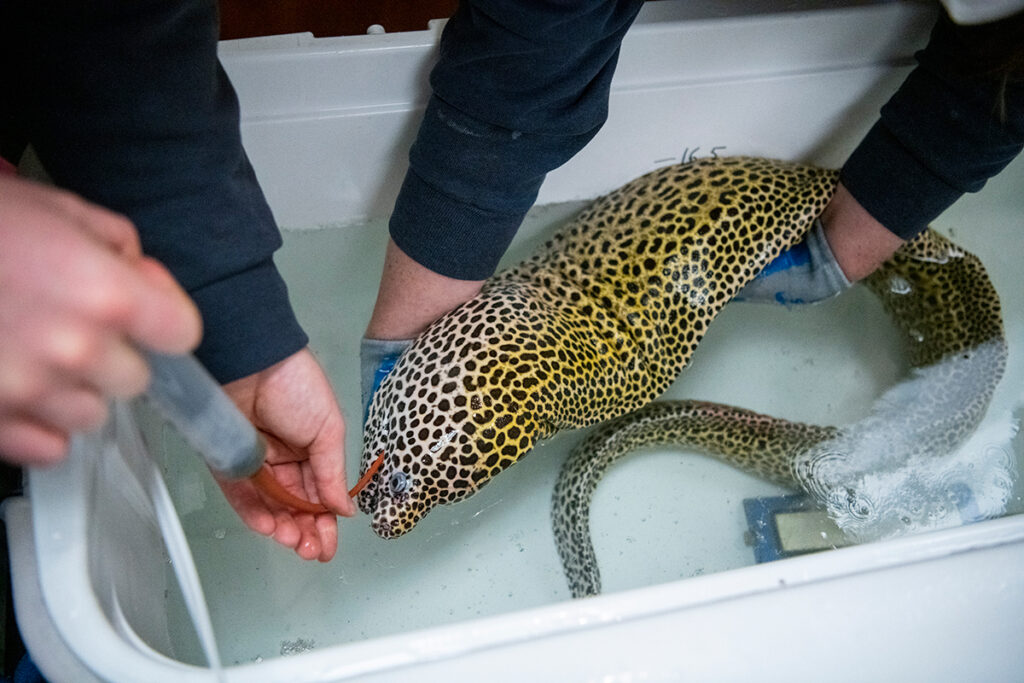
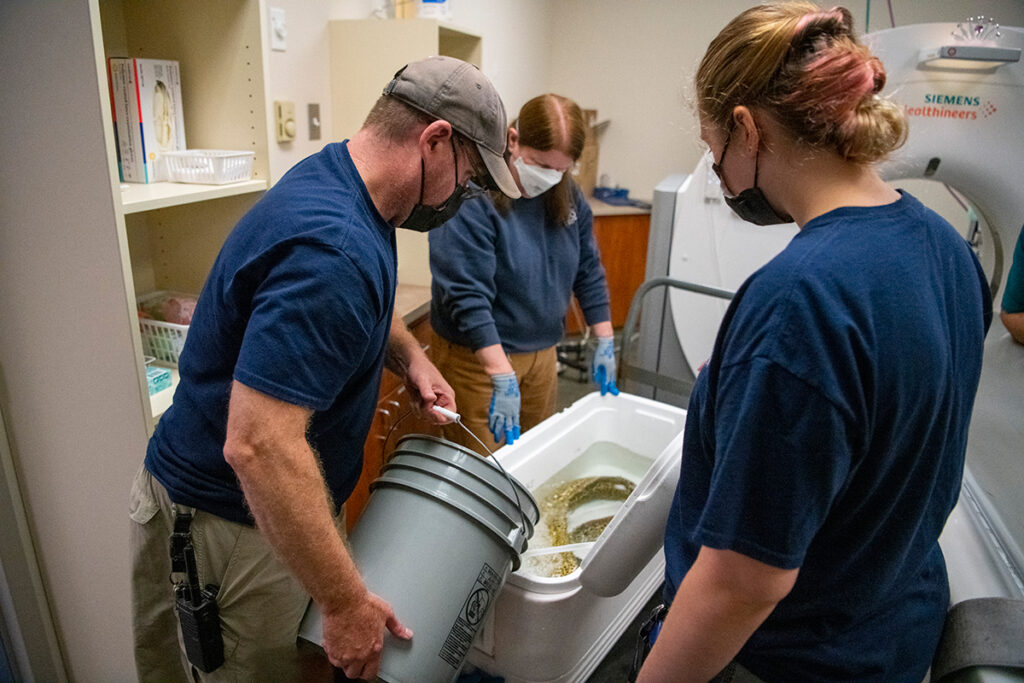 Larry Gordon’s mass is visible on the top of his mouth.
Larry Gordon’s mass is visible on the top of his mouth.
The animal care team transported the leopard eel home to the Zoo.
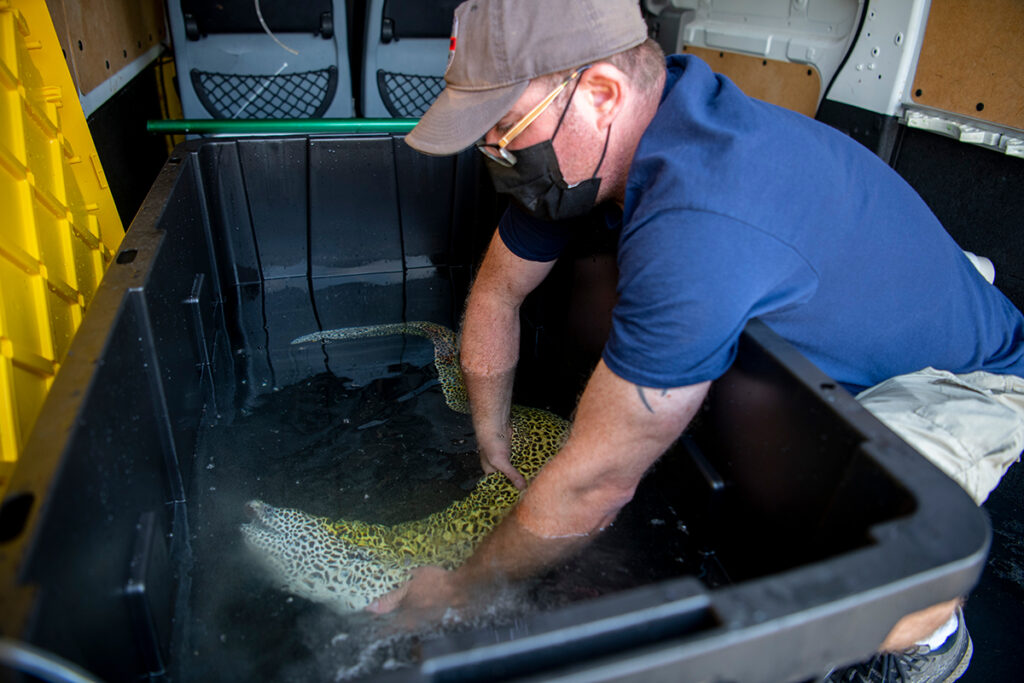 Summit veterinarian and radiologist Dr. Kelsey Johnson reviewed CT scan results with Dr. Anderson.
Summit veterinarian and radiologist Dr. Kelsey Johnson reviewed CT scan results with Dr. Anderson.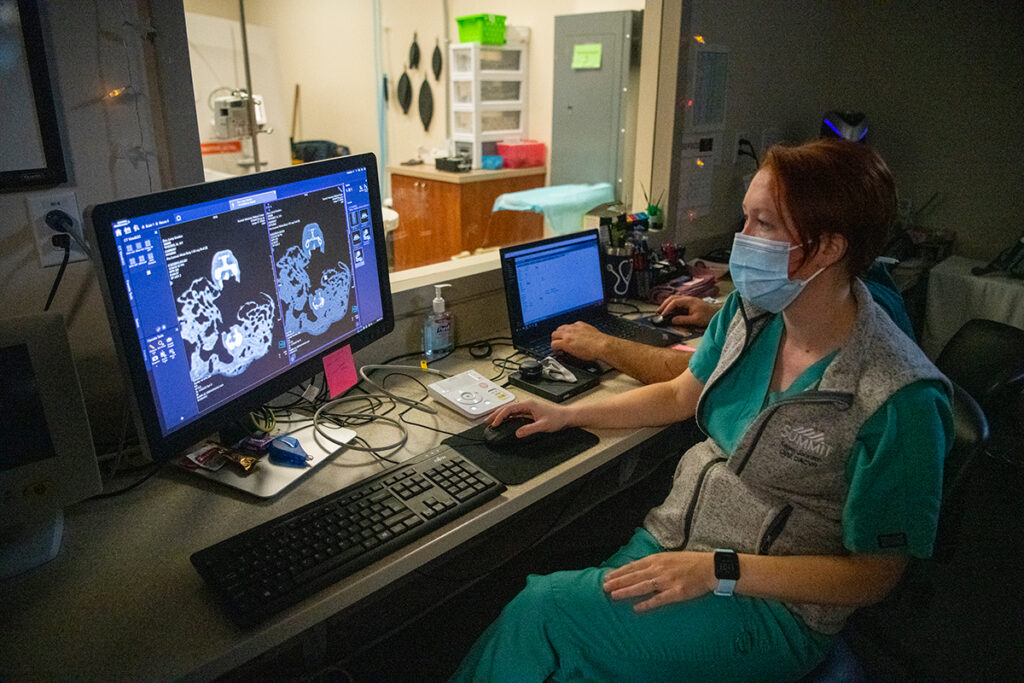 “The CT scan showed that the growth in Larry Gordon’s mouth is restricted to the roof of his mouth and does not appear to have moved into his bone or nasal passages,” Dr. Anderson said.
“The CT scan showed that the growth in Larry Gordon’s mouth is restricted to the roof of his mouth and does not appear to have moved into his bone or nasal passages,” Dr. Anderson said.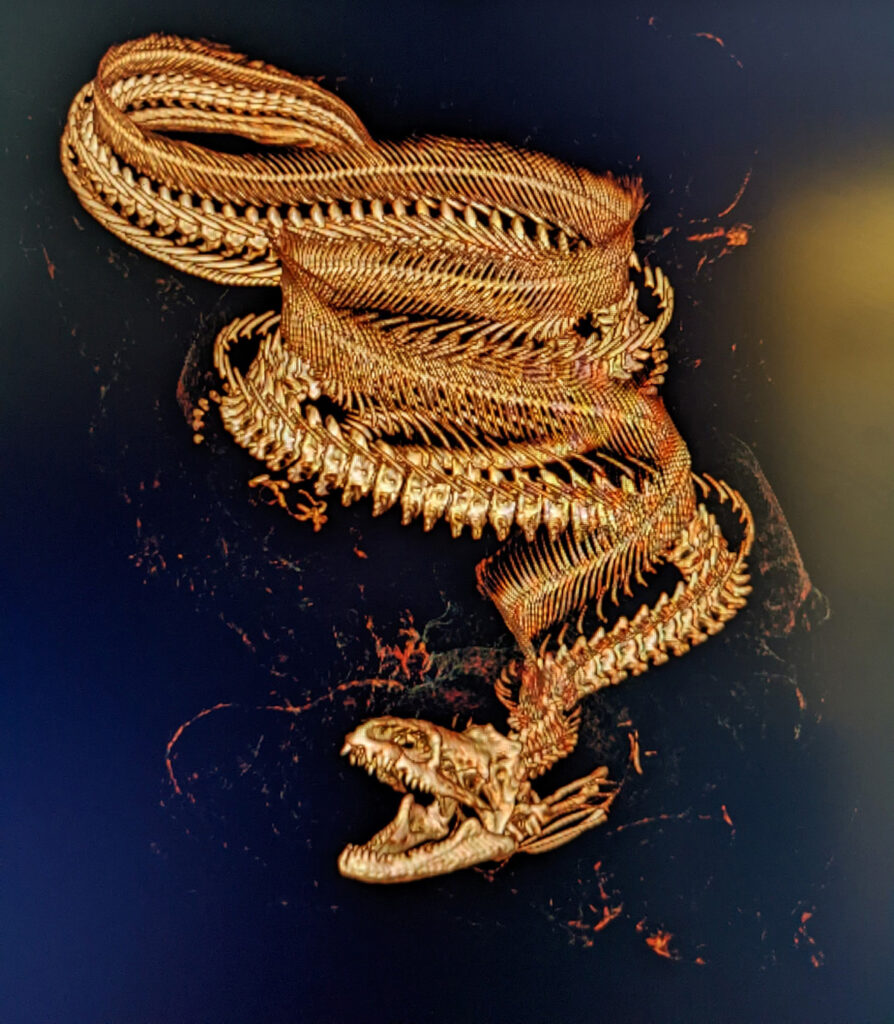
Dr. Anderson will now work with a veterinary dentist and surgeons to surgically remove the oral growth and help Larry Gordon feel better. 